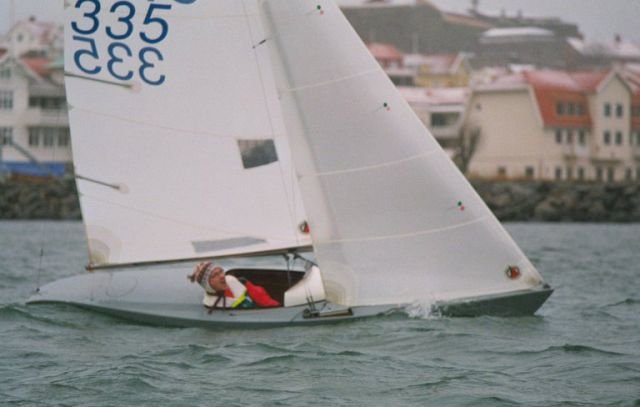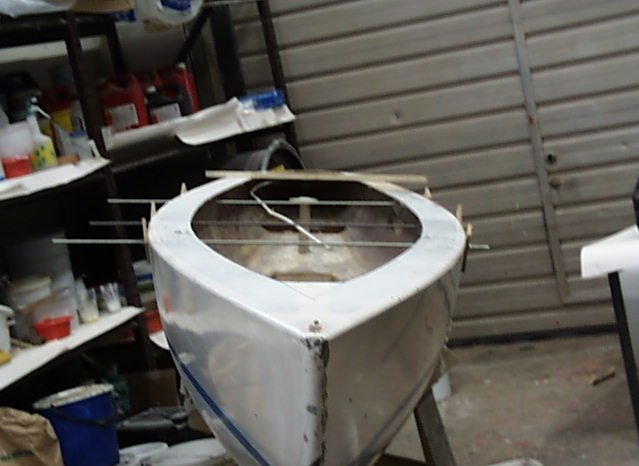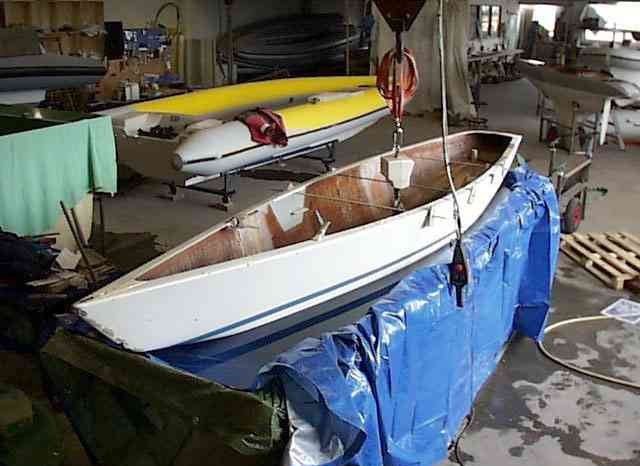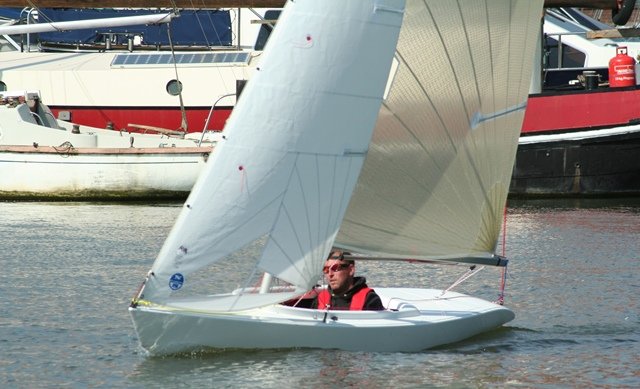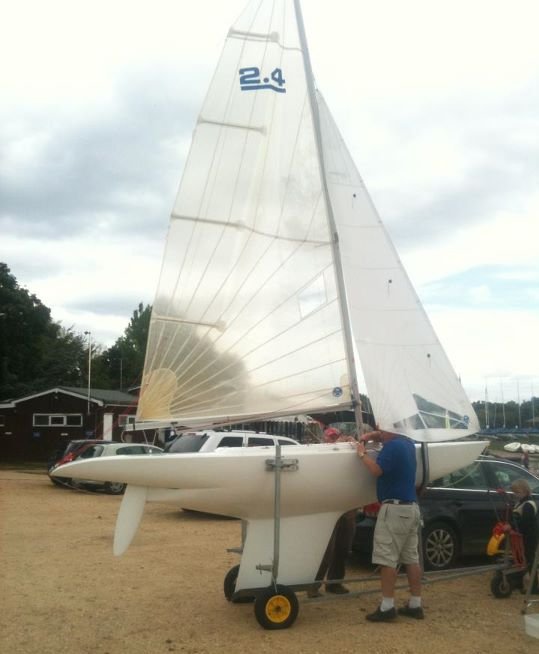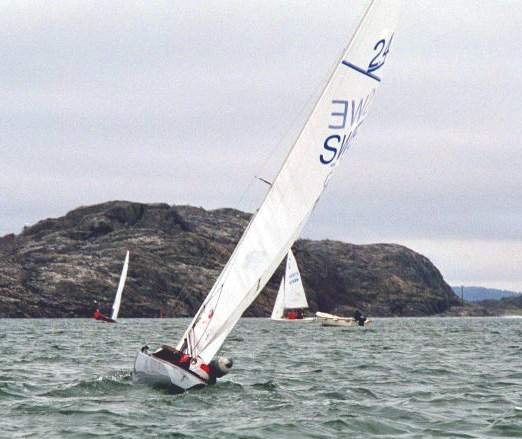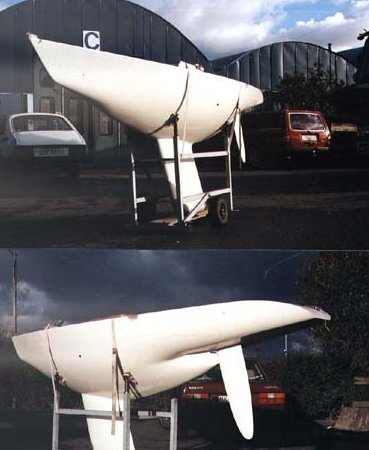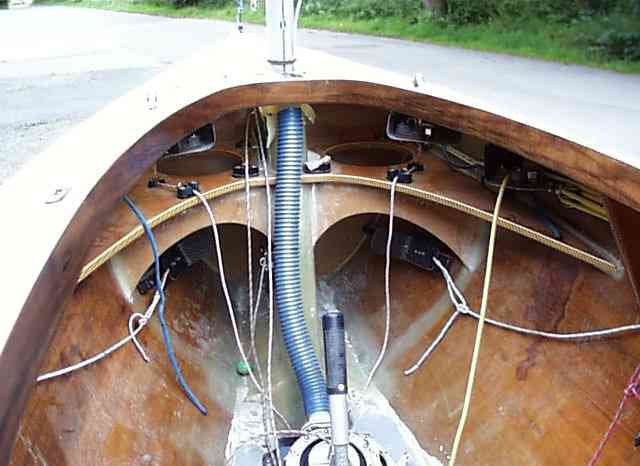Studying the design development in the bigger sisters, especially the Twelve’s one cannot neglect
the Mariner fiasco.
In short B Chance Jr. had in the tank work prior to the design of a Twelve for the 1976 Cup found that by increasing the bustle and introducing an underwater transom there was a an evident increase in speed
potential at least in the tank testing.
Unfortunately it did not turn out as predicted. The boat was slow and though there was a lot more to it
than just the design error it still was evident that the problems inherent in scaling was completely misgauged.
For a curious designer/builder the natural question arising from this experience is then “at what rate of scaling
does the findings from the tank testing become invalid”.
Would the Mariner concept work for a 2,4mR, there’s only one way to find out – full scale testing.
First I tried an increased bustle in the style of ¼ tonners like Mazanita by Ron Holland that looked like having dimples when seen from behind.
This did not work out very well so I decided to rethink the Mariner concept and move the underwater transom back to the L1 station as opposed to Mariners that was positioned at the waterline position. This had the effect
not only to decrease the relative size of the transom it also increased the length of the underwater body and the volume of the hull.

